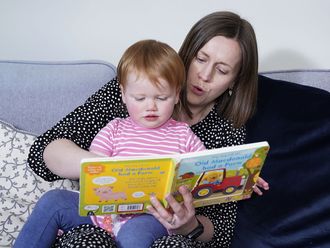
Abu Dhabi: Some 64 per cent of young social media users in Saudi Arabia have not affected their social engagement, compared to 36 per cent, who were affected variably, as engaging in various forms of social media has become a routine daily activity for most children and adolescents, a report issued by the Saudi Statistics Authority has revealed.
Saudi Arabia has the largest social media presence in the world, as a percentage of the population. With 40.20 million mobile subscribers, mobile penetration stands at 116 per cent of the total population.
Active Saudi social media users stand at 25 million, an incredible 72.38 per cent of the population. According to reports from Hoot Suite and We are Social, Saudis are the largest group of active users on Instagram, Twitter, and Snapchat in the region. The average time a Saudi spends on social media via any device is 3 hours and 2 minutes daily.
Average users
The report said that the average percentage of Saudi social media users is 44.59 per cent (43.75 per cent males compared to 45.46 per cent females).
It showed that the those who use social media sparingly account for 10.27 per cent (9.03 per cent males compared to 11.55 per cent females).
Social consultant Abdullah Al Ghanim emphasised that social media sites provide teenagers with the opportunity to stay connected to friends and family, make new friends, share pictures and exchange ideas.
He added young people can also develop their creativity through sharing their art or music, and get to know others from diverse backgrounds through shared interests. Social media sites also offer enhanced learning opportunities.
Some schools use blogs as teaching tools with the benefit of improving English skills, writing and creativity. Facebook and other similar sites allow students to gather outside of school and exchange ideas about assignments or collaborate on group projects
Risks of using social media
Al Ghanim added that using social media can often become a risk for adolescents even more than adults realise.
“Cyberbullying is a major risk for all teens, and refers to using digital media to communicate false, embarrassing or hostile information about another person. Cyberbullying can happen to anyone and often causes psychological problems such as depression, anxiety, isolation and even suicide,” he noted.
Al Ghanim said ‘Facebook depression’ is a new term that refers to depression that develops as a result of children and teens spending a lot of time on social media sites and experiencing depression as a result. When teens compare themselves to photos of others and the illusion of others’ better lives, they can experience decreased self-esteem and depression.
“Depression, in turn, puts these children at risk of social isolation and seeking help from risky online websites and blogs that may promote unhealthy coping mechanisms including substance use, unsafe sex, or self-destructive behaviours,” he added.
Many children and adolescents do not understand the fact that everything they do online leaves a ‘digital footprint’. This can hurt their future reputation, hurt their job or college application and follow them forever, he said.








